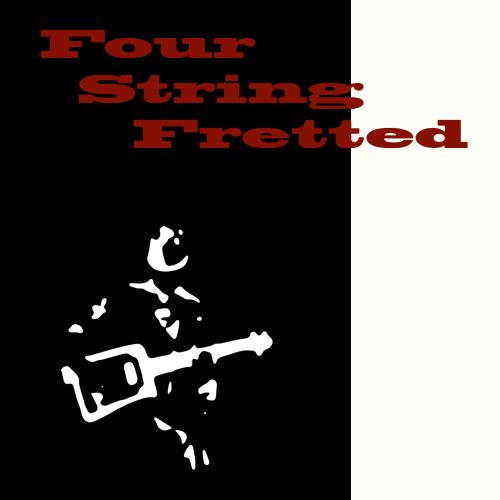
The 4 string course is for for fretted guitars tuned GDGB. It assumes no prior knowledge or experience so is perfect for beginners and intermediate players. By the end you'll be navigating your fretboard efficiently and have the picking skills to play your instrument well. You'll also have a strog repertoire of tunes under your belt and a real good handle on chord theory.
Because there is more scope with a 4 string than a 3 string guitar this course is longer than the 3 string courses and covers a lot more ground. It starts with the essentials of how to position your hands, how to fret a note and how to hold your pick and moves on to have you playing some classic rock standards such as Jumpin' Jack Flash, Ripple and Here Comes The Sun, all songs well suited to this tuning.
As well as learning a stack of new chords and a few scales you'll learn how they are constructed and why we use the ones we do. We move slowly and with plenty of practical examples to back up the theory.
Here's the course in a lot more detail.
Lesson1 | Hand position, holding your pick and fretting a note |
| The right hand lesson covers hand position, how to hold your pick and how to strike the string with minimal movement. | |
| The left hand lesson again covers hand position, this time getting you to play just one note on the fretboard cleanly and again with an economy of movement. | |
| You can now play the Willie Dixon classic and a favourite of mine, Spoonful. It uses an open string and just one fretted note. | |
Lesson2 | Picking in time and fretting two notes |
| The right hand lesson moves on to using your pick to play an upstroke, I said we went slowly. The main reason for the upstroke is so that you can play up and down in time and so you're introduced very early to the timing exercise to embed this crucial skill straight away. | |
| This left hand lesson builds on the work in lesson one around hand position. To play the two notes cleanly you need to keep your hand still while just moving your fingers. If you can do these exercises then we both know that you're on track to get that right. | |
| The Performace Task for this lesson is the classic I'm A Man riff friom Bo Diddley. It uses just the two fretted notes and the open string and we play it a bit faster than the original to make sure that you're picking is on track. | |
Lesson3 | Strumming in time and more left hand position work |
| Having learned an efficient way to pick one string it's time to move on to strumming all four with the same relaxed approach. You'll play along with the timing exercise to develop strong rhythmic skills right from the outset. | |
| The left hand exercise continues to examine your hand position, ensuring that you can make the subtle movements that will help your chord playing later on. | |
| The Performance Task looks at some simple open chords and a few strumming patterns. | |
Lesson4 | Proprioception and left hand dexterity |
| A more complex lesson now that you have the basics down and one that will take a little more time. The right hand lesson has you picking across adjacent strings so that you can learn to find them simply by knowing where your hand is without looking down at it. | |
| The left hand exercise is another important one that you'll come back to over and over again. It reinforces your hand position, ensuring that all 4 fingers can negotiate the fretboard cleanly and move independently of each other. | |
| Here you'll learn your first single line melody, Auld Lang Syne using all of the concepts covered in the two technical lessons. | |
Lesson5 | Picking two strings at a time and tritones |
| Here you'll continue to develop your right hand skills by learning to first locate and then play two adjacent strings together while not playing the other two. This skill will be crucial when learning more complex songs later on. | |
| Tritones are an important part of chord playing and blues soloing and you'll revisit them many times, for now they give us some very practical opportunities to develop your left hand skills. | |
| The Performance Task for this lesson is a 12 bar blues solo using tritones. | |
Lesson6 | Consolidating your right hand skills and learning some riffs |
| Solo guitar playing particularly requires a strong set of right hand skills, here you'll learn to combine strumming with picking one and two strings at a time to give your playing a little spice. | |
| Learning some riffs to go along with rhythm playing enhances your left hand dexterity, helps co-ordinate right and left hands and gets you started learning about the fretboard and how different notes work together. | |
| In this song lesson you'll revisit Spoonful using all of the techniques you've learned to this point. | |
Lesson7 | More advanced skills |
| Having got the basics down learning some folk picking patterns is the best way to soup up your picking skills, even if you're not into this style of playing it really helps you pick in time and further develop your proprioception. | |
| With more confidence in your left hand skills it's time to grab some chords. This lesson looks at different G chords so that you know how to play them and how to construct them and can hear the differences beteween them. | |
| One of the great Classic Rock songs is Ripple by The Grateful Dead and here you'll make full use of your picking and left hand skills to play the intro to this great song. The chord chart is in the TAB as well so when you get a few more chords under your belt you'll be able to play the whole thing. | |
Lesson8 | More tritones |
| Tritones define the all important seventh chord, they have a slightly dissonant sound and are responsible for much of the tension and emotion in blues, folk and rock music particularly. Learning how they work will help you construct these chords, help you understand your fretboard and help you use them to create your own music. | |
| They are demonstrated here in 3 different blues solos of increasing complexity. | |
Lesson9 | Bass runs, the major scale and connecting your chords |
| Rather than just playing a song by moving from one chord to another here you'll learn some simple techniques to connnect them together using bass runs. | |
| The second part of the lesson has a more in depth look at the major scale. | |
| And with all of this you'll be able to play Stand By Me by Ben E. King. | |
Lesson10 | Picking out a Groove and playing Diatonic Chords |
| Now that your right hand skills are solid you can start to develop some strong musicianship skillls around rhythm, playing in time by switching between 4 to the bar, 8 to the bar and 16 to the bar. Good times! | |
| Diatonic Chords are simply all of the chords in a particular key and with your left hand skills smooth it's time to forge ahead with a few new chord shapes. | |
| All I Have TO Do Is Dream by The Everly Brothers uses a stack of diatonic chords and the changes are typical of thousands songs from New Orleans to Belfast. | |
Lesson11 | Any Chord, Any Key, Any Time |
| Now that you can play these chords and you've got your major scale down it's time to wrap your head around chord and scale function so that you can play any chord at all without a chord chart. | |
| Now that you're not limited to just playing in the key of G you can play Light My Fire by The Doors. | |
Lesson12 | Left Hand Position Shifting |
| Another technical lesson for your left hand, this one is based on classical techniques and is all about moving your hand up and down the fretboard quickly and efficiently. | |
| To practice this skill you've got another single line melody The Battle Hymn of the Republic | |
Lesson13 | Green River |
| With most of the technical stuff out of the way it's time to reinforce everything you've learned and have some fun along the way. Green River by Creedence is well suited to this tuning, and it's a great song. | |
Lesson14 | Jumpin' Jack Flash |
| Steppin' it up a gear with The Stones classic Jumpin' Jack Flash. Keith of course played this with only 5 strings and more or less the same tuning. | |
Lesson15 | Hey Hey My My |
| Neil Young's Hey Hey My My, not as tricky as the previous one but there's a chord change that'll take a little practice. | |
Lesson16 | Travelling Riverside Blues |
| Time for some traditional Country Blues with this Robert Johnson's Travelling Riverside Blues. You'll also learn Led Zeppelin's take on this one and see how the Rock Master adapted this old blues to his own devious ends. | |
Lesson17 | The Minor Pentatonic Scale |
| Back to some theory, this important scale is one that you must know, simple as that. | |
| You'll see it in action in Jimi Hendrix's Foxy Lady. | |
Lesson18 | The Major Pentatonic Scale |
| To complete your first set of scales you'll learn the Major Pentatonic scale, an important one in Gospel, Country and Rock music. | |
| And to see it in action no better song than The Stones' Honky Tonk Woman. | |
Lesson19 | Get Back |
| Two more songs left, this one's the Beatle's Get Back, complete with that awesome riff and George's solo. | |
Lesson20 | Here Comes The Sun |
| And they said it couldn't be done!!!! |
